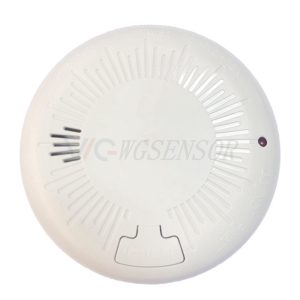Introduction:
Smoke alarms play a crucial role in safeguarding homes and public spaces by providing early warnings in the event of a fire. Understanding how these devices are triggered is essential for both homeowners and the general public. In this article, we will delve into the mechanisms behind smoke alarm activation.
1. Smoke Sensing Technology:
Most smoke alarms use one of two primary technologies for smoke detection: ionization and photoelectric sensing.
a. Ionization Sensing: Ionization smoke alarms contain a small amount of radioactive material. When smoke particles enter the ionization chamber, they disrupt the flow of ions, leading to a change in electrical current. This change triggers the alarm.
b. Photoelectric Sensing: Photoelectric smoke alarms employ a beam of light within a sensing chamber. When smoke particles enter the chamber, they scatter the light, causing a reduction in light intensity. This disturbance activates the alarm.
2. Dual Sensor Alarms:
To enhance effectiveness, some smoke alarms integrate both ionization and photoelectric technologies. These dual sensor alarms can quickly detect a wide range of fires, making them more reliable in various scenarios.
3. Heat Detection:
While less common, some smoke alarms include heat sensors as an additional layer of protection. These sensors activate the alarm when a significant increase in temperature is detected, even in the absence of visible smoke. This feature is particularly useful in areas where smokeless fires may occur.
4. Carbon Monoxide Integration:
Advanced smoke alarms may also include sensors for carbon monoxide (CO) detection. Carbon monoxide is a colorless, odorless gas produced by incomplete combustion. An integrated CO sensor can trigger the alarm when elevated CO levels are detected, providing a comprehensive warning system.
5. Maintenance and Sensitivity:
Regular maintenance is crucial to ensure the proper functioning of smoke alarms. Dust, dirt, and other contaminants can interfere with sensor performance. Additionally, users should be mindful of the device’s sensitivity settings, as some alarms allow adjustments based on the environment to minimize false alarms.
Conclusion:
Smoke alarms are indispensable tools for fire safety, and understanding how they are triggered is essential for maximizing their effectiveness. Whether using ionization, photoelectric, or dual sensor technology, these devices serve as early warning systems, providing valuable time for evacuation and minimizing the potential for injury or property damage in the event of a fire. Regular maintenance and awareness of sensitivity settings further contribute to the reliable operation of smoke alarms, ensuring the safety of occupants in residential and commercial spaces alike.


Please contact us for free quotation by form below. We promise the quickest response within 24 hours: